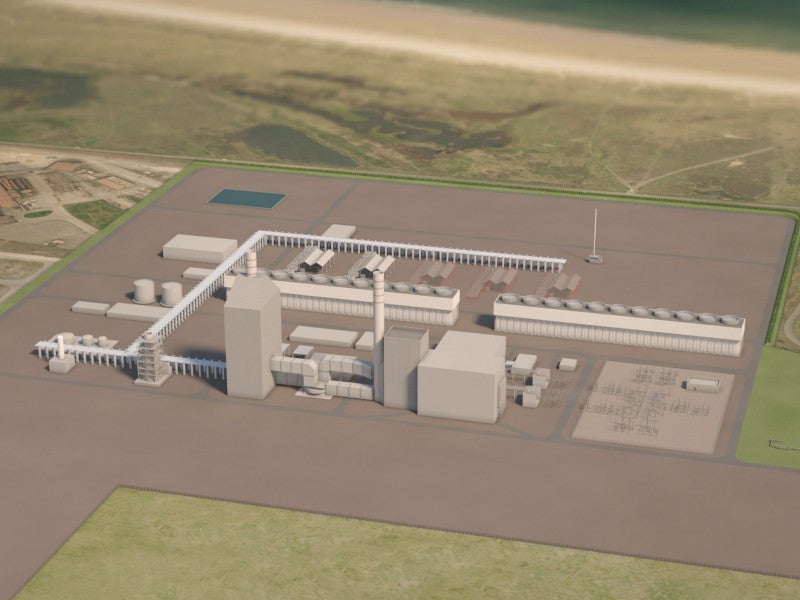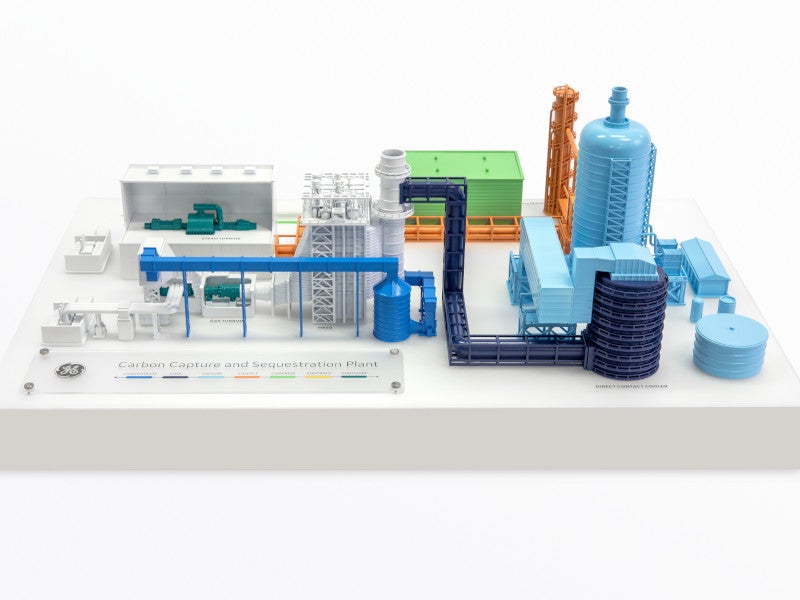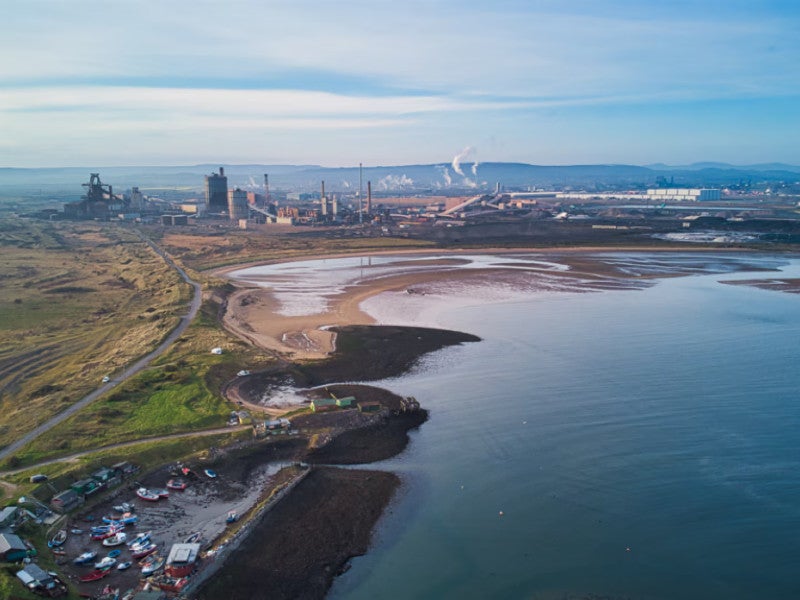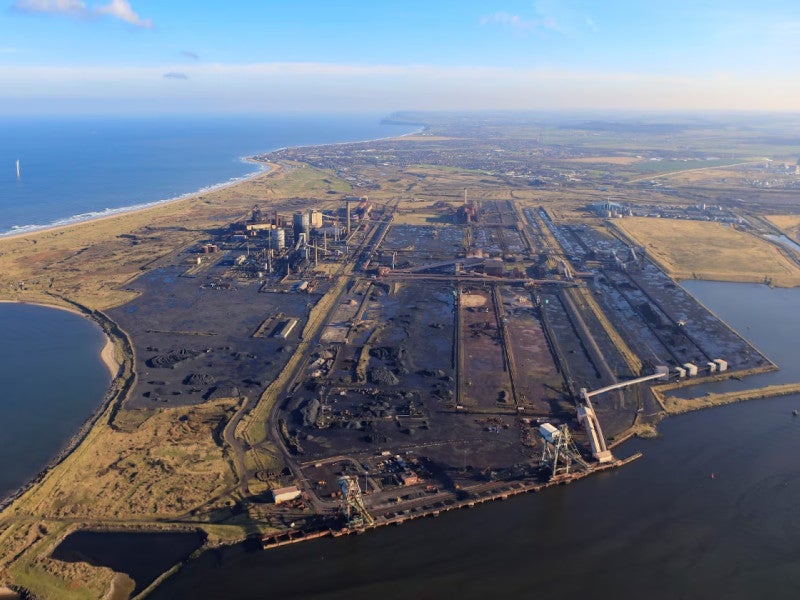The Net Zero Teesside (NZT) power project, located in the Teesside region of northeast England, UK, is an integrated gas-fired power generation project with carbon capture technology.
Officially launched in February 2020, the project is being developed through OGCI (Oil and Gas Climate Initiative) Climate Investments, a $1bn+ investment fund. Consortium members include BP, Eni, Equinor, Shell and Total, with BP as the operator.
With a projected capacity of 860MW, NZT Power is poised to make a substantial contribution to the UK’s energy needs, while capturing up to two million tonnes (Mt) of CO2 annually. The project will generate enough power to meet the needs of 1.3 million homes in the UK.
The project received development consent from the Secretary of State for the Department for Energy Security and Net Zero in February 2024. The final investment decision is anticipated by September 2024, with commercial operations commencing in 2027.
The NZT gas-fired power project, previously referred to as the Clean Gas project, is a landmark development in the UK’s efforts to achieve a lower-carbon energy future.
The NZT Power project is expected to generate 4,000 jobs during construction and contribute up to £300m ($370m) per year to the economy.
Location details
NZT Power will be situated on the South Tees Development site and will be the first major development there.
The site lies within the Redcar and Cleveland Borough Council and the Stockton-on-Tees Borough Council areas.
The proposed gas-fired power station and the CO2 collection and compression facility will be located in the SSI steelworks in Redcar.
The commencement point of the CO2 transportation/export pipeline, which is intended to extend offshore, is in the same place. The infrastructure for the power station and the CO2 collection network will traverse territories within both Redcar and Stockton-on-Tees, including sub-river passages beneath the river Tees.
Net Zero Teesside (NZT) power project details
NZT Power will operate as a combined-cycle gas turbine (CCGT) electricity generating station with an installed capacity of up to 860MW.
It will feature an advanced GE Vernova 9HA.02 gas turbine, a steam turbine, a generator, and a heat recovery steam generator. The systems will be integrated with a state-of-the-art carbon capture plant utilising the Canopy by T.EN™ carbon capture solution powered by CANSOLV® CO2 capture technology.
The power station is designed for rapid start-up and will capture more than 95% of emissions. The captured CO2 will be dried and compressed for safe transportation and storage by the Northern Endurance Partnership in subsea sites beneath the North Sea. The power generated from the site will be fed to the national grid via the nearby Tod Point facility.
Turbine details
The GE Vernova 9HA.02 gas turbine is recognised for its reliability, efficiency, and low emissions. It can achieve more than 64% net efficiency in combined-cycle operation and has a NOx emission level of 15ppm [parts per million].
The turbine offers industry-leading reliability, availability and operational flexibility, including the ability to operate on up to 50% hydrogen by volume.
It has a 5% lower total cost of ownership compared to GE’s F-class, resulting from lower capital expenditure, simplified configuration, reduced fuel costs and extended maintenance intervals.
Northern Endurance Partnership (NEP) details
The NEP, announced in October 2020, comprises BP, Equinor, Eni, National Grid, Shell and Total. Operated by BP, the partnership is developing offshore CO2 transport and storage infrastructure in the UK North Sea to serve the Net Zero Teesside project and support the creation of decarbonised industrial clusters in Teesside.
Funding
Private and public funding amounting to £229m ($317.7m) was secured in March 2021 as part of the Industrial Decarbonisation Challenge under the UK Research and Innovation’s Industrial Strategy Challenge Fund (ISCF). The funding was received to accelerate projects, which included the NZT, that will reduce industrial emissions on the east coast of England.
The NZT Power project also received funding in December 2023 through the industrial decarbonisation challenge, with awards of £28m ($36m) to NZT Power and £24m ($31m) to NEP from the ISCF for the design and development of the project.
Contractors involved
A consortium of engineering and technology company Technip Energies, energy company GE Vernova, infrastructure group Balfour Beatty and energy company Shell was awarded the engineering, procurement and construction contracts for the onshore power, capture and compression aspects of the project.
Costain, a British construction and engineering company, will handle the onshore CO2 gathering system and gas connection.
A partnership of Marubeni-Itochu Tubulars (an equipment manufacturer), Liberty Steel Hartlepool (a steel and mining company), Corinth Pipeworks (a steel pipes supplier) and Eisenbau Kramer (a steel pipes specialist), was chosen for the onshore and offshore line pipe provision.
Saipem, an Italian multinational oilfield services company, has been tasked with the offshore pipeline, landfalls, onshore outlet facilities and water outfall.
Oil and gas company TechnipFMC will construct the offshore subsea injection system. Alcatel Submarine Networks, experts in submarine optical systems, will install power and communications cables.
Genesis, a leading advisory company, will provide offshore systems engineering services. Wood, a global consulting and engineering company, will serve as the integrated project management team.
AECOM, a global infrastructure consultancy, has developed the planning development consent order, environmental permit applications, and best available techniques assessments for the project.
The firm also conducted an environmental impact assessment and generated virtual consultation resources to elucidate the project’s benefits and engage with regulatory authorities and community stakeholders.
The contracts for design and development were awarded to two engineering consortia in December 2021. The first was led by Technip Energies and included Shell and Balfour Beatty, and the second was led by Aker Solutions with Aker Carbon Capture, Doosan Babcock and Siemens Energy. Each group is committed to delivering a comprehensive front-end engineering design package.
Turner & Townsend, a prominent global consultancy based in the UK, provided procurement services for the project.







